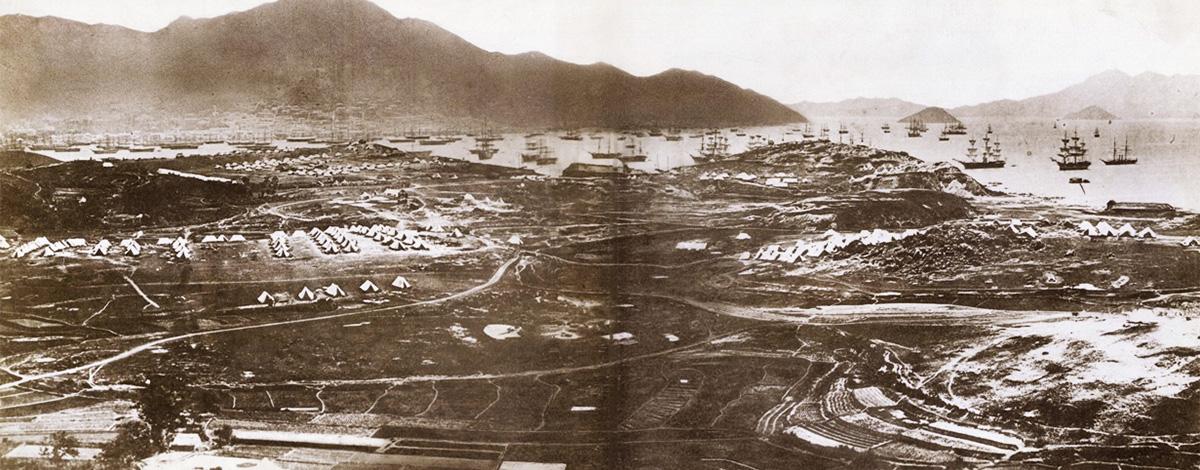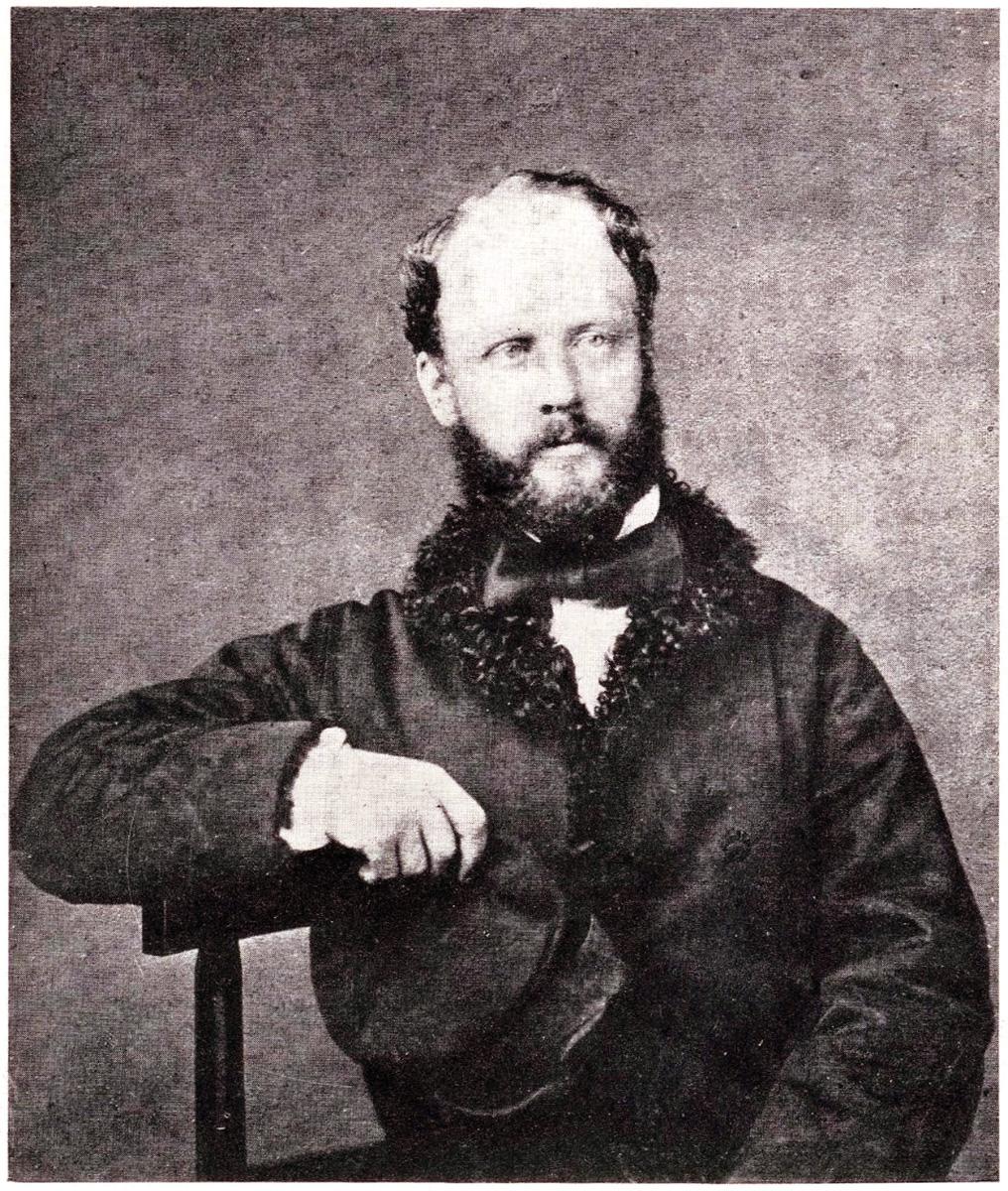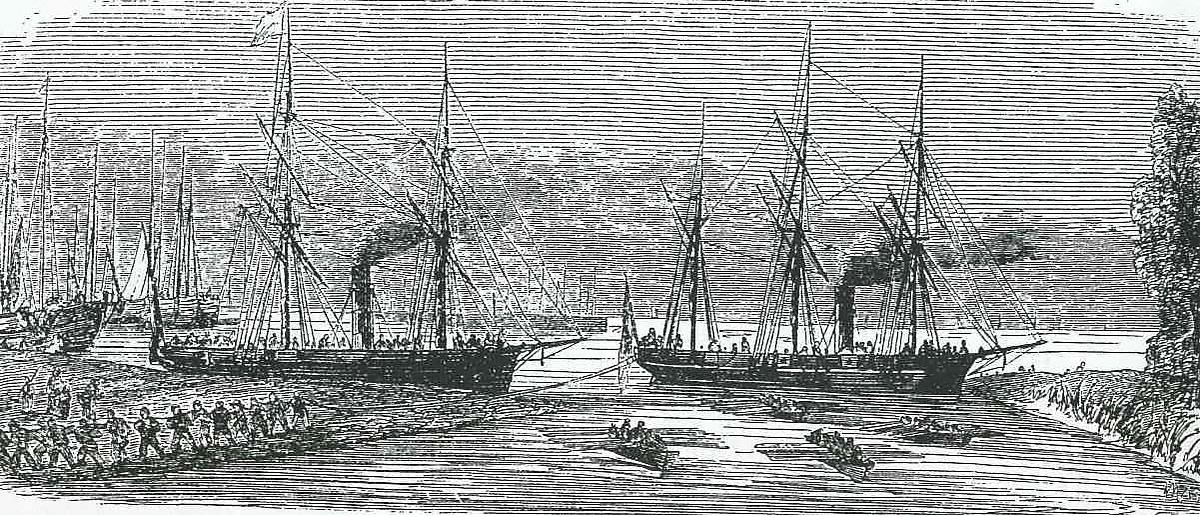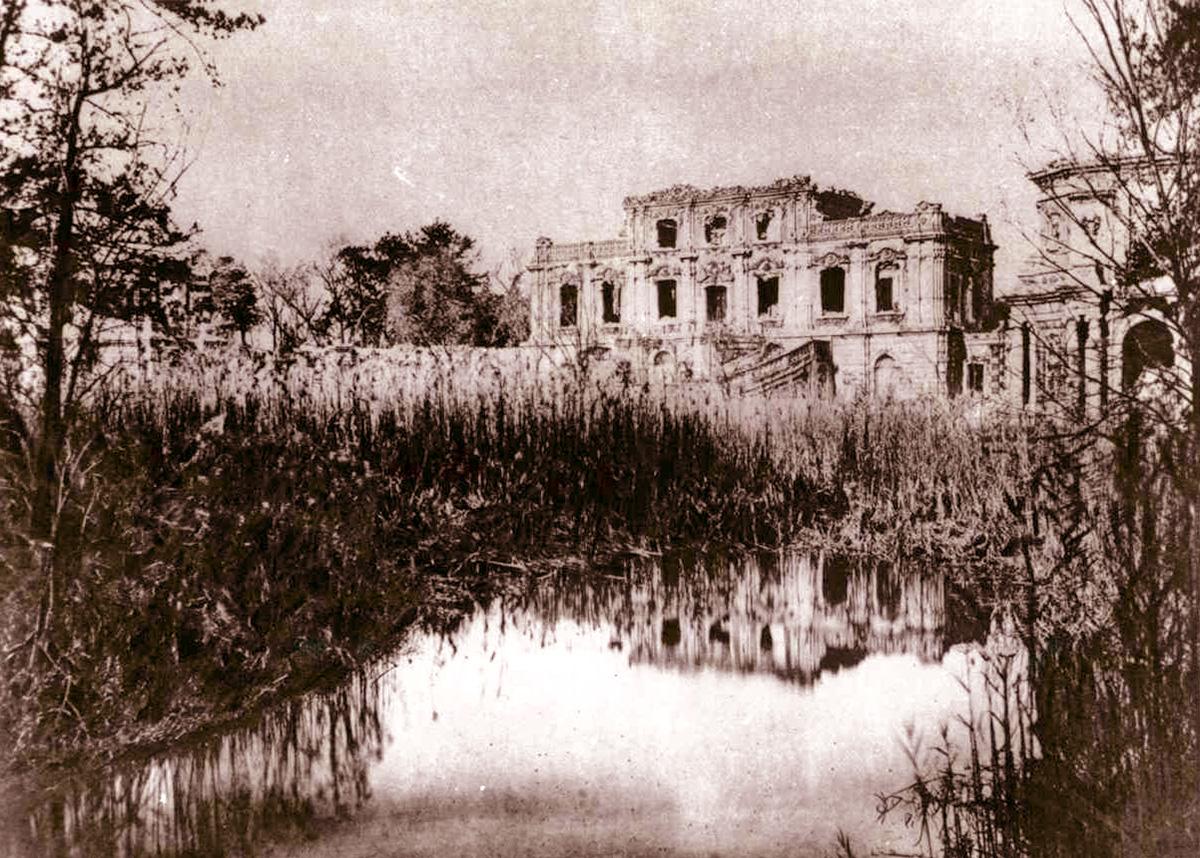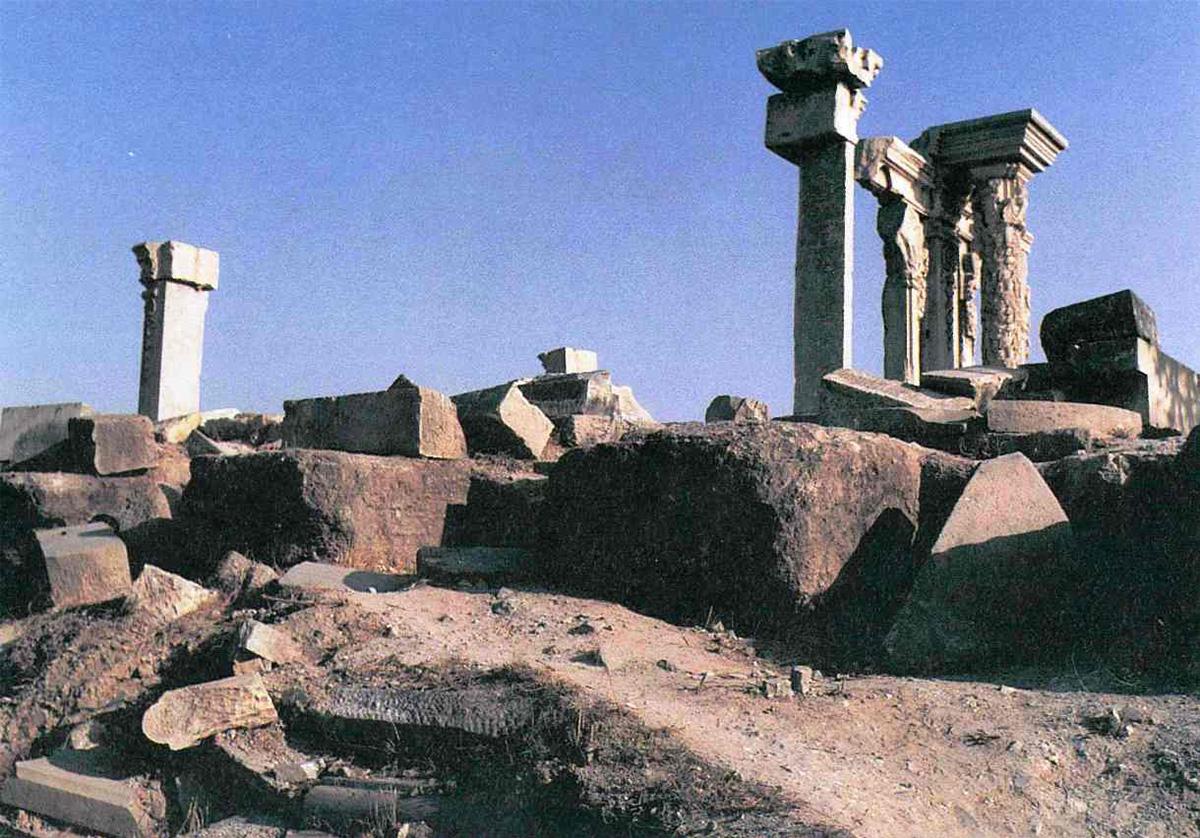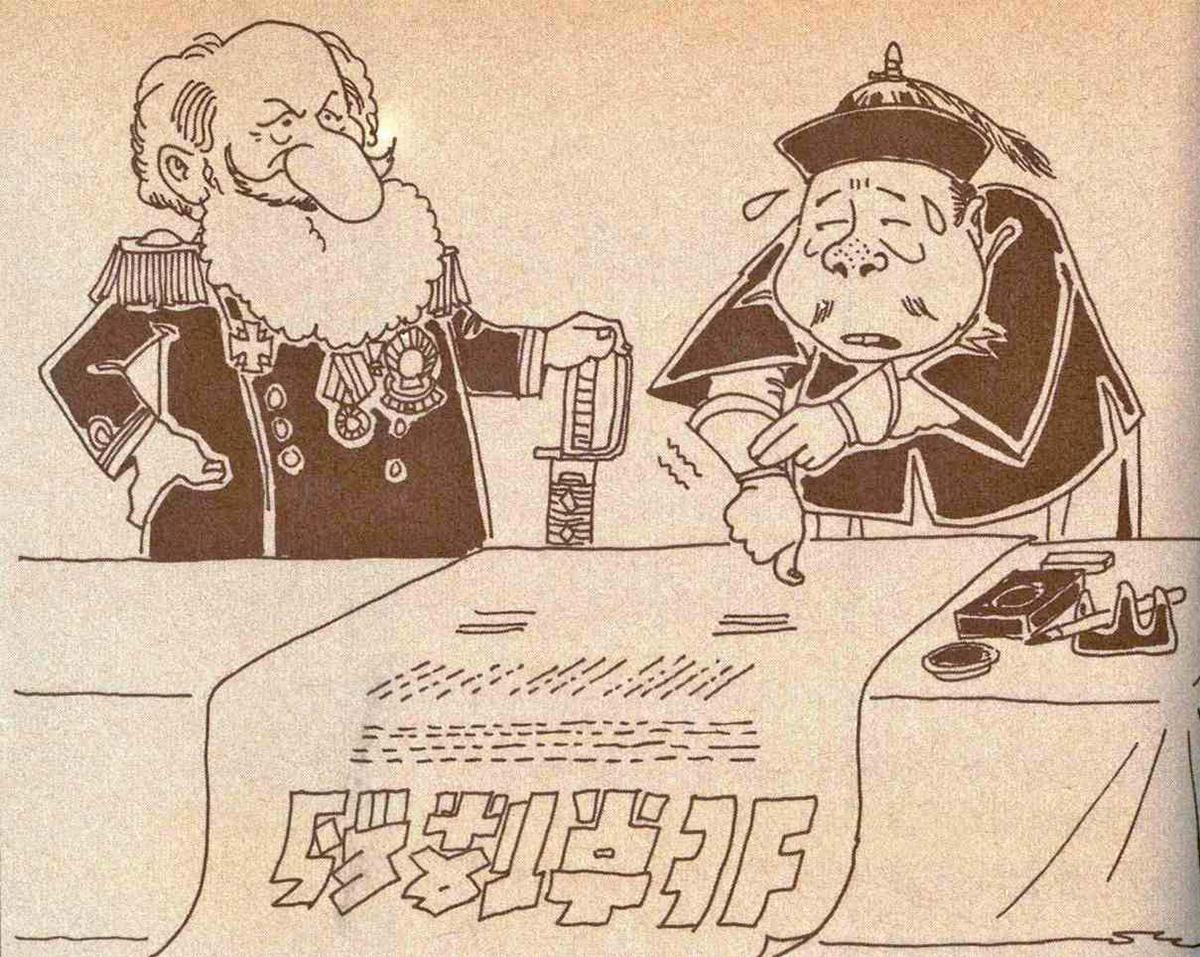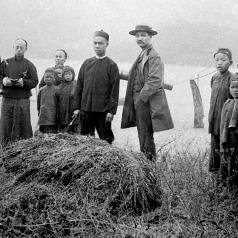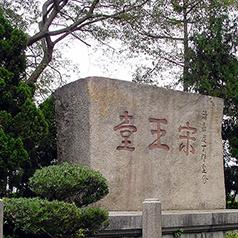The Second Opium War broke out in October 1856 and the Anglo-French alliance attacked Guangzhou (廣州) the following year. The Viceroy of Liang-Guang (兩廣總督) Ye Mingchen (葉名琛) was captured in January 1858. On 18 March 1860, the British forces landed in Tsim Sha Tsui, the headland of Kowloon Peninsula and a part of China’s territory. Anglo-French alliance also took control of Guangzhou. On 21 March 1860, Harry Smith Parkes forced the Viceroy of Liang-Guang Lao Chongguang (勞崇光) to sign a treaty leasing Kowloon to Britain.
On 13 October 1860, the Anglo-French alliance took control of Anding Gate (安定門) in Beijing (北京), where they installed cannons facing the Forbidden City. The alliance then looted the Old Summer Palace before burning it to the ground. Responding to the military and diplomatic pressure, Yixin (奕訢), also known as Prince Gong (恭親王), the plenipotentiary of the Qing government, was forced to sign the Conventions of Peking (or Conventions of Beijing,《北京條約》) with Britain and France. The Article 6 of the Sino-British Convention of Peking stipulated the cession of a part of Kowloon Peninsula (south of present-day Boundary Street and Stonecutters Island) to Britain. Similar to the cession of northeastern and northwestern China to Russia, the Sino-British Convention of Peking further stimulated the Western powers to carve up China.
|
|
What was the impact of the British cession of Kowloon on Hong Kong? |
|
|
See answer below. |
The invading British fleet ready to set sail to attack China during the Second Opium War.
The Anglo-French alliance attacking Guangzhou in 1857.
The Anglo-French alliance looting Guangzhou.
The British forces landing in Tsim Sha Tsui in March 1860.
Harry Smith Parkes, the British Consul General in Guangzhou, forced China to lease Kowloon to Britain.
A map showing northern Hong Kong Island, Kowloon, and Victoria Harbour at that time.
The Anglo-French fleets converging at Dagu (大沽).
The architectural remains of the Old Summer Palace soon after it was burnt down by the Anglo-French alliance.
The present-day remains of the Old Summer Palace.
A cartoon showing that the Qing government being forced to sign the Sino-British Convention of Peking. The Convention stipulated the cession of Kowloon to Britain.
|
|
What was the impact of the British cession of Kowloon on Hong Kong? |
|
|
The major impact was as follows: 1 Britain could control Victoria Harbour which lies between Hong Kong Island and the Kowloon Peninsula. The development of Hong Kong entered a new phase. 2 Britain became ambitious to expand its governance beyond Hong Kong Island and the Kowloon Peninsula. In 1898, it pushed forward to borrow the New Territories north to Kowloon. |
Unless otherwise specified, the images in this material are provided by Professor Lau Chi-pang and Professor Liu Shuyong. Every effort has been made to trace the copyright holders and obtain permission to reproduce this material. Please do get in touch with any enquiries or any information relating to this image or the rights holder.




